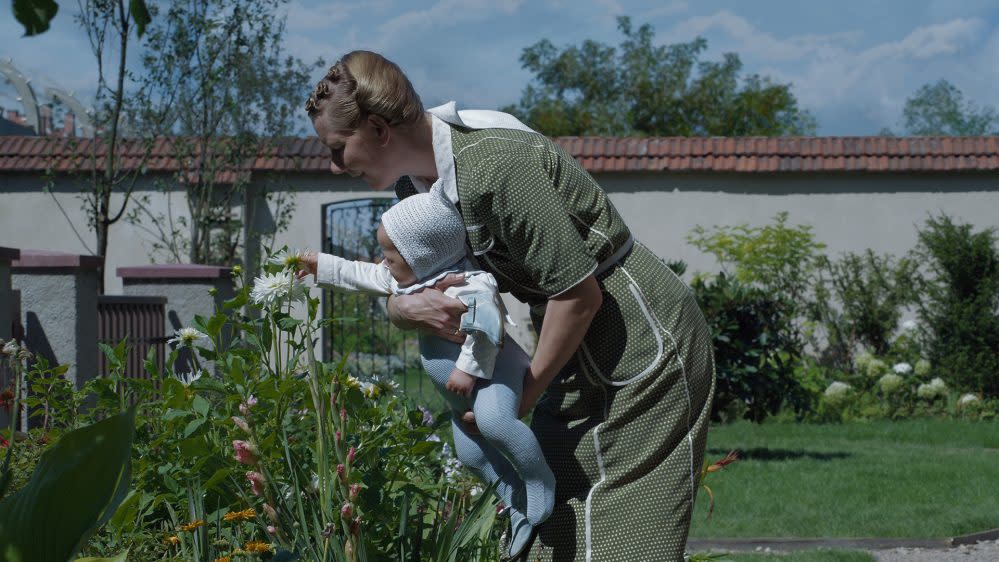How ‘Zone of Interest’ Achieved Its Chilling Sound

- Oops!Something went wrong.Please try again later.
- Oops!Something went wrong.Please try again later.
When filmmaker Jonathan Glazer sent sound designer Johnnie Burn the script for his Holocaust drama “The Zone of Interest” a year before production even began, Glazer laid down clear guidelines for the role sound was going to play: He did not want to share images that audiences knew and he wasn’t going to show the familiar, devastating scenes of the German concentration camp. He wanted to reflect everything through sound.
Glazer told Burn, who was also sound designer on “Poor Things,” that he wanted him to become an expert on the sounds that would have emanated from the camp in 1943.
More from Variety
The Oscar-nominated film centers around Commandant Rudolf Höss (Christian Friedel) and his wife Hedwig (Sandra Huller) who live a dream life with their children in a seemingly-perfect home — except that the house and garden border a concentration camp.
Burn says the film was approached two ways: “We saw it as being two films: one you see, and one you hear. We made the family drama film without any sound, and Jon and I spent five months deciding where to apply the sound of the camp.”
As Rudolf and Hedwig live their lives of apparent domestic bliss, smoke billows in the distance and the audience hears the grim sound of dogs barking, gunshots being fired in the distance and bone-chilling screams. Burn approached the job scientifically. “You had to be accurate with the distance and volume of sound,” Burn explains. “There were 80 executions a day during that period by gunshot alone, outside of random acts of killing and the chambers. So, we had to decide how often we should have that portrayed without sensationalizing anything.”
When it came to the sickening, constant churning sound of the crematorium, Glazer had told Burn he was seeking one sound from him that would progress the story. Initially, it was only going to be placed in a few scenes. Says Burns, “Jon said, ’There’s a shot of Hans Höss (Luis Noah Witte) mimicking the sound of the crematorium that he can hear outside the window, can you make something for that?’ Using stuff at home with a chimney, flames and implements, I made something that matched the rhythm of his voice.” Burn ended up delivering a sound recording that was 15 minutes long.
Glazer put the sound over several scenes, including Rudolph smoking outside at night and when Hedwig wakes up at night seeing the red glow outside the window. “It was incredibly effective for months during the picture edit, but a year into post, we thought, ‘What if it was constant?’” And so, it stretched out to become an endless sound heard in the background. “We were surprised by how well it worked, but it allowed us to remove some more sensationalized elements that we previously had on there,” says Burns.
As for the film’s muted gunshots, Burn didn’t just shoot guns in the distance and record them — he went to Auschwitz and measured the distance between the garden and block 11. Once he had that, he found a firing range on the Isle of Wight in the U.K. “It was quiet and not near a busy road,” says Burn. “It also had a line of buildings which provided the sloppy echoey sound that made that sound really credible.”
To authentically capture the family’s tranquil life, Glazer had 10 hidden cameras which allowed for long takes, but kept the cameras rolling on his actors. Sound-wise, there were 20 microphones in place that moved according to the sounds that needed to be captured. “There were no boom operators,” Burn points out. “We wired the house with three-quarters of a mile of cable, and [had] bass microphones absolutely everywhere, predominantly in the ceiling, pointing down at the areas. We had them on gooseneck cables so we could make sure that where the actors were going to be in the next take, they would be pointing in the right direction.” Says Burn, “Concurrent scenes were being filmed; the wife would be in the kitchen talking, Rudolph would be in his office talking with the IG Farben executives about the new crematorium plans, Elfryda (Medusa Knopf) would be upstairs walking around with the baby and the boys would be banging their drums. It was all happening at the same time, and with all the different microphone tracks, I could very successfully create the idea of what it felt like to be in a real house.”
The different tracks also allowed Burn to build complex layers of sound. “We could blur the line of ‘Was that a baby crying? Or was it someone crying in the camp?”
Burn is most proud of a scene that comes early on in the film, when Hedwig walks out into the garden. “It’s extraordinary because you haven’t been out there yet. You’re visually amazed because they walk out of the house, down the steps and you’re in the stone brick wall of the courtyard. You hear a buzzing sound, and you see the electric fence. There are gorgeous sunflowers, birds and grass, and as the camera pans, you hear different sounds from over the wall. Five meters away. Placing those different segments of pain and suffering is enormously effective. I love it when they walk through the garden — it’s an amazing contradiction between idyllic life and what happens over the wall.”
Best of Variety
Sign up for Variety’s Newsletter. For the latest news, follow us on Facebook, Twitter, and Instagram.

